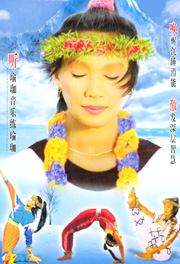 Yoga
exponents are being caught out by
the activity's relaxing and low impact image with more than one
in four injured during sessions.
Yoga
exponents are being caught out by
the activity's relaxing and low impact image with more than one
in four injured during sessions.
A failure to warm up and prepare
adequately for the exercise has been identified as causing the
surprising injury rate.
The risks of yoga are contained in a sports injuries report to
be released today.
The research, commissioned by Medibank Private, found sports
injuries cost the Australian community more than .8 billion
in the past year. The medical bill was 0 million more than
the previous year.
Footballers were the most likely to be hurt and those aged between
18 and 24 were at greatest risk of breaking down.
Sports physician Dr Peter Larkins said yoga was not inherently
dangerous but the injury rate showed many participants were not
doing it correctly.
"You have to get the correct program and advice. There are
a lot of stretching manoeuvres and
maybe some are trying it at 38 thinking they are 18," he
said.
"Yoga has become the new aerobics
and some people are getting it out of a book or video. Participants
need to ensure that they don't overdo it, particularly when starting
a new health and fitness regime."
Nicole Walsh, the owner of Body Mind Life yoga studio, said she
had not experienced the injury rate found in the survey.
She said students of Bikram yoga complete warm up breathing and
stretching exercises before progressing. The increased room temperature
also made injuries less frequent.
The report found 5.2 million injuries were incurred on Australian
sporting fields and courts in the past 12 months requiring almost
25,000 hospital admissions and 250,000 emergency department presentations.
An alarming 3.6m injuries were untreated.
Ankle, foot and achilles tendon
injuries are the most common accounting for 20 per cent of all
sporting injuries.
The warning from fitness experts to warm up and cool down had
failed to reach the masses with only 38 per cent of survey respondents
saying they regularly completed pre and post sport regimes.
(Agencies)
